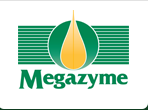TheSuccinicAcidtestkitissuitableforthespecificassayofsuccinicacidinwine,cheese,eggs,sauceandotherfoodproducts.
Grapeandwineanalysis:Oenologiststoexploitadvancedtestkits.
Charnock,S.C.&McCleary,B.V.(2005).RevuedesEnology,117,1-5.
LinktoArticle
ReadAbstract
Itiswithoutdoubtthattestingplaysapivotalrolethroughoutthewholeofthevinificationprocess.Toproducethebestposs
IBLequalitywineandtominimiseprocessproblemssuchas“stuck”fermentationortroublesomeinfections,itisnowrecognisedthatifpossibletestingshouldbeginpriortoharvestingofthegrapesandcontinuethroughtobottling.Tr
ADItionalmethodsofwineanalysisareoftenexpensive,timeconsuming,requireeitherelaborateequipmentorspecialistexpertiseandfrequentlylackaccuracy.However,enzymaticbio-analysisenablestheaccuratemeasurementofthevastmajorityofanalytesofinteresttothewinemaker,usingjustonepieceofapparatus,thespectrophotometer(
seepreviousissueNo.116foradetailedtechnicalreview).Grapejuiceandwineareamenabletoenzymatictestingasbeingliquidstheyarehomogenous,easytomanipulate,andcangenerallybeanalysedwithoutanysamplepreparation.
Megazyme“advanced”winetestkitsgeneralcharacteristicsandvalidation.
Charnock,S.J.,McCleary,B.V.,Daverede,C.&Gallant,P.(2006).ReveuedesOenologues,120,1-5.
LinktoArticle
ReadAbstract
ManyoftheenzymatictestkitsareofficialmethodsofprestigiousorganisationssuchastheAssociationofOfficialAnalyticalChemicals(AOAC)andtheAmericanAssociationofCerealChemists(AACC)inresponsetotheinterestfromoenologists.Megazymedecidedtouseitslonghistoryofenzymaticbio-analysistomakeasignificantcontributiontothewineindustry,bythedevelopmentofarangeofadvancedenzymatictestkits.Thistaskhasnowbeensuccessfullycompletedthroughthestrategicandcomprehensiveprocessofidentifyinglimitationsofexistingenzymaticbio-analysistestkitswheretheyoccurred,andthenusingadvancedtechniques,suchasmolecular
BIOLOGy(
photo1),torapidlyovercomethem.Noveltestkitshavealsobeendevelopedforanalytesofemerginginteresttotheoenologist,suchasyeastavailablenitrogen(
YAN;seepages2-3ofissue117article),orwherepreviouslyenzymesweresimplyeithernotavailable,orweretooexpensivetoemploy,suchasforD-mannitolanalysis.
DimethylsulfideisanenergysourcefortheheterotrophicmarinebacteriumSagittulastellata.
Boden,R.,Murrell,J.C.&Schäfer,H.(2011).FEMSMicrobiologyLetters,322(2),188-193.
LinktoArticle
ReadAbstract
Dimethylsulfide(DMS)isavolatileorganosulfurcompound,ubiquitousintheoceans,thathasbeencreditedwithvariousrolesinbiogeochemicalcyclingandinclimatecontrol.VariousoceanicsinksofDMSareknown–bothchemicalandbiological–althoughtheyarepoorlyunderstood.InadditiontotheutilizationofDMSasacarbonorasulfursource,someBacteriaareknowntooxidizeittodimethylsulfoxide(DMSO).SagittulastellataisaheterotrophicmemberoftheAlphaproteobacteriafoundinmarineenvironments.IthasbeenshowntooxidizeDMSduringheterotrophicgrowthonsugars,butthereasonsforandthemechanismsofthisoxidationhavenotbeeninvestigated.Here,weshowthattheoxidationofDMStoDMSOiscoupledtoATPsynthesisinS.stellataandthatDMSactsasanenergysourceduringchemoorganoheterotrophicgrowthoftheorganismonfructoseandonsuccinate.DMSdehydrogenase(whichisresponsiblefortheoxidationofDMStoDMSOinothermarineBacteria)andDMSOreductaseactivitieswereabsentfromcellsgrowninthepresenceofDMS,indicatinganalternativerouteofDMSoxidationinthisorganism.
Artefactsincellculture:α-Ketoglutaratecanscavengehydrogenperoxidegeneratedbyascorbateandepigallocatechingallateincellculturemedia.
Long,L.H.&Halliwell,B.(2011).BiochemicalandBiophysicalResearchCommunications,406(1),20-24.
LinktoArticle
ReadAbstract
Ascorbateandseveralphenoliccompoundsreadilyoxidiseincellculturemediatogeneratehydrogenperoxide.However,additionofα-ketoglutarate,whichisknowntobereleasedbyseveralcelltypes,decreasedthelevelsofH2O2,andtheα-ketoglutaratewasdepletedandconvertedtosuccinate.Theseobservationscouldaccountforpreviousreportsoftheprotectiveeffectsofα-ketoglutarateinpromotingthegrowthofcellsinculture,andmaycontributetoexplainingsomeofthevariabilityintheliteratureinreportedratesofH2O2productionfromautoxidisablecompoundsincellculturesystems.
BiochemicalmechanismonGABAaccumulationduringfruitdevelopmentintomato.
Akihiro,T.,Koike,S.,Tani,R.,Tominaga,T.,Watanabe,S.,Iijima,Y.,Aoki,K.,Shibata,D.,Ashihara,H.,Matsukura,C.,Akama,K.,Fujimura,T.&Ezura,H.(2008).PlantandCellPhysiology,49(9),1378-1389.
LinktoArticle
ReadAbstract
Alargeamountofγ-aminobutyricacid(GABA)wasfoundtoaccumulateintomato(Solanumlycopersicum)fruitsbeforethebreakerstage.Shortlythereafter,GABAwasrapidlycatabolizedafterthebreakerstage.WescreenedtheGABA-richtomatocultivar‘DG03-9’whichdidnotshowrapidGABAcatabolismafterthebreakerstage.AlthoughGABAhyperaccumulationandrapidcatabolisminfruitsiswellknown,themechanismsarenotclearlyunderstood.Inordertoclarifythesemechanisms,weperformedcomparativestudiesof‘Micro-Tom’and‘DG03-9’fruitsfortheanalysisofgeneexpressionlevels,proteinlevelsandenzymaticactivitylevelsofGABAbiosynthesis-andcatabolism-relatedenzymes.DuringGABAaccumulation,wefoundpositivecorrelationsamongGABAcontentsandexpressionlevelsofSlGAD2andSlGAD3.Bothofthesegenesencodeglutamatedecarboxylase(GAD)whichisakeyenzymeofGABAbiosynthesis.DuringGABAcatabolism,wefoundastrongcorrelationbetweenGABAcontentsandenzymeactivityofα-ketoglutarate-dependentGABAtransaminase(GABA-TK).Thecontentsofglutamateandaspartate,whicharesynthesizedfromGABAandglutamate,respectively,increasedwithelevationofGABA-TKenzymaticactivity.GABA-TKisthemajorGABAtransaminaseforminanimalsandappearstobeaminorforminplants.In‘DG03-9’fruits,GADenzymaticactivitywasprolongeduntiltheripeningstage,andGABA-TKactivitywassignificantlylow.Takentogether,ourresultssuggestthatGADandGABA-TKplaycrucialrolesinGABAaccumulationandcatabolism,respectively,intomatofruits.
IsolationandcharacterizationofanovelheterotrophicnitrifyingandaerobicdenitrifyingbacteriumPseudomonasstutzeriKTBforbioremediationofwastewater.
Zhou,M.,Ye,H.&Zhao,X.(2014).BiotechnologyandBioprocessEngineering,19(2),231-238.
LinktoArticle
ReadAbstract
Anovelheterotrophicnitrifyingandaerobicdenitrifyingbacterium,KTB,wasisolatedfromactivatedsludgefloccicollectedfromabiologicalaeratedfilteraccordingtothemodifiedTakayamethodandidentifiedasPseudomonasstutzeriby16SrDNAgenesequenceanalysis.Whenshaking-culturedinthepresenceof4.331mmol/Lofnitrate,4.511mmol/Lofnitriteand4.438mmol/Lofammonium,thestraingrewfast,withµmaxbeing0.42,0.45,and0.56/h,anddisplayedhighnitrogenremovalefficiency,withnitrogenremovalratebeing0.239,0.362,and0.361mmol/L/handnitrogenremovalratiobeing99.1,100.0,and100.0%in18h,respectively.Theremovalmainlyoccurredinthelogarithmicphase.Nitriteaccumulationdidnotaffectdenitrificationperformance.Nitrateconcentrationwasbelowthedetectablelimitduringthewholegrowthcyclewhenammoniumwasusedassolenitrogensource.IttoleratedhighDOlevelandexhibitedexcellentaggregationability.Apossiblepathwayinvolvedinthenitrogenremovalprocess,whichdemonstratedafullnitrificationanddenitrificationroute,wasspeculated.Thestrainmightbeagreatcandidateforbiologicalremovalofnitrogencompoundsfromwastewater.
IdentificationofOrganicAcidsinWineThatStimulateMechanismsofGastricAcidSecretion.
Liszt,K.I.,Walker,J.&Somoza,V.(2012).JournalofAgriculturalandFoodChemistry,60(28),7022-7030.
LinktoArticle
ReadAbstract
Winemaycausestomachirritationduetoitsstimulatoryeffectongastricacidsecretion,althoughthemechanismsbywhichwineorcomponentsthereofactivatepathwaysofgastricacidsecretionarepoorlyunderstood.GastricpHwasmeasuredwithanoninvasiveintragastricprobe,demonstratingthatadmi
NISTrationof125mLofwhiteorredwinetohealthyvolunteersstimulatedgastricacidsecretionmorepotentlythantheadministrationofequivalentamountsofethanol.Betweenbothbeverages,redwineshowedacleartrendforbeingmoreactiveinstimulatinggastricacidsecretionthanwhitewine(
p=0.054).Quantificationoftheintracellularprotonconcentrationinhumangastrictumorcells(HGT-1),awell-establishedindicatorofprotonsecretionand,inturn,stomachacidformation
invivo,confirmedthestrongereffectofredwineascomparedtowhitewine.RT-qPCRexperimentsoncellsexposedtoredwinealsorevealedamorepronouncedeffectthanwhitewineonthefoldchangeexpressionofgenesassociatedwithgastricacidsecretion.Ofthequantitativelyabundantorganicacidsinwine,malicacidandsuccinicacidmostactivelystimulatedprotonsecretion
invitro.However,additionofethanoltoindividualorganicacidsattenuatedthesecretoryeffectoftartaricacid,butnotthatoftheotherorganicacids.Itwasconcludedthatmalicacidforwhitewineandsuccinicacidforredwinearekeyorganicacidsthatcontributetogastricacidstimulation.
SuccinicacidproductionfromorangepeelandwheatstrawbybatchfermentationsofFibrobactersuccinogenesS85.
Li,Q.,Siles,J.A.&Thompson,I.P.(2010).AppliedMicrobiologyandBiotechnology,88(3),671-678.
LinktoArticle
ReadAbstract
Succinicacidisaplatformmoleculethathasrecentlygeneratedconsiderableinterests.Productionofsuccinatefromwasteorangepeelandwheatstrawbyconsolidatedbioprocessingthatcombinescellulosehydrolysisandsugarfermentation,usingacellulolyticbacterium,FibrobactersuccinogenesS85,wasstudied.OrangepeelcontainsD-limonene,whichisawell-knownantibacterialagent.ItseffectsonbatchculturesofF.succinogenesS85wereexamined.Theminimalconcentrationsoflimonenefoundtoinhibitsuccinateandacetategenerationandbacterialgrowthwere0.01%,0.1%,and0.06%(v/v),respectively.Bothpre-treatedorangepeelbysteamdistillationtoremoveD-limoneneandintactwheatstrawwereusedasfeedstocks.Increasingthesubstrateconcentrationsofbothfeedstocks,from5to60g/L,elevatedsuccinateconcentrationandproductivitybutloweredtheyield.Inaddition,pre-treatedorangepeelgeneratedgreatersuccinateproductivitiesthanwheatstrawbuthadsimilarresultanttitres.Thegreatestsuccinatetitreswere1.9and2.0g/Lforpre-treatedorangepeelandwheatstraw,respectively.Thisworkdemonstratedthatagriculturalwastesuchaswheatstrawandorangepeelcanbebiotransformedtosuccinicacidbyaone-stepconsolidatedbioprocessing.Measurestoincreasefermentationefficiencyarealsodiscussed.
Gamma-aminobutyricacid,glutamatedehydrogenaseandglutamatedecarboxylaselevelsinphylogeneticallydivergentplants.
Seher,Y.,Filiz,O.&Melike,B.(2013).PlantSystematicsandEvolution,299(2),403-412.
LinktoArticle
ReadAbstract
Gamma-aminobutyricacid(GABA)isanonproteinaminoacidfoundinawiderangeoforganismsincludingplants.SeveralstudieshaveshownthatGABAplaysdifferentrolesinplantmetabolismincludingcarbon–nitrogenmetabolism,energybalance,signalinganddevelopment.IthasbeensuggestedthattheoccurrenceofGABAandtheenzymesrelatedtoGABAbiosynthesisinprokaryotesandeukaryotesmaybeimportantinevolutionanddiversification.However,studiesofGABAbiosynthesisandGABAlevelsinanevolutionarycontextarerestrictedtosequencedplantgenomes.InthisstudyweaimedtocomparetheactivitiesofGDHandGADenzymesandtotalnitrogen,andthecontentsoftotalsolubleprotein,succinate,glutamate,prolineandGABAinplantsfromdifferentphylogeneticlevelsincludingUlvalactuca,Pseudeverniafurfuracea,Nephrolepsisexaltata,Ginkgobiloba,Pinuspinea,Magnoliagrandiflora,Nymphaeaalba,Urticadioica,Portulacaoleraceae,Malvasylvestris,Rosacanina,Lavandulastoechas,Washingtoniafilifera,AvenabarbataandIriskaempferi.TheactivitiesofGADandGDHenzymesdifferedaccordingtothespeciesandwerenotalwaysparalleltoGABAlevels.ThediscrepancyinthecontentsofsuccinateandGABAbetweenhigherandprimitiveplantswasalsoprominent.Glutamatelevelswerehighwithafewexceptionsandprolinecontentswereatsimilarlowvaluesascomparedtootheraminoacids.OurresultssupportthehypothesisthattheGABAshuntplaysakeyroleincarbonandnitrogenpartitioningvialinkingaminoacidmetabolismandthetricarboxylicacidcyclewhichisessentialforhigherplantspecies.
ExposuretoelevatedtemperatureandPco2reducesrespirationrateandenergystatusintheperiwinkleLittorinalittorea.
Melatunan,S.,Calosi,P.,Rundle,S.D.,Moody,A.J.&Widdicombe,S.(2011).PhysiologicalandBiochemicalZoology,84(6),583-594.
LinktoArticle
ReadAbstract
Inthefuture,marineorganismswillfacethechallengeofcopingwithmultipleenvironmentalchangesassociatedwithincreasedlevelsofatmosphericPco2,suchasoceanwarmingandacidification.Topredicthoworganismsmayormaynotmeetthesechallenges,anin-depthunderstandingofthephysiologicalandbiochemicalmechanismsunderpinningorganismalresponsestoclimatechangeisneeded.Here,weinvestigatetheeffectsofelevatedPco2andtemperatureonthewhole-organismandcellularphysiologyoftheperiwinkleLittorinalittorea.Metabolicrates(measuredasrespirationrates),adenylateenergynucleotideconcentrationsandindexes,andend-productmetaboliteconcentrationsweremeasured.Comparedwithvaluesforcontrolconditions,snailsdecreasedtheirrespirationrateby31%inresponsetoelevatedPco2andby15%inresponsetoacombinationofincreasedPco2andtemperature.Decreasedrespirationrateswereassociatedwithmetabolicreductionandanincreaseinend-productmetabolitesinacidifiedtreatments,indicatinganincreasedrelianceonanaerobicmetabolism.TherewasalsoaninteractiveeffectofelevatedPco2andtemperatureontotaladenylatenucleotides,whichwasapparentlycompensatedforbythemaintenanceofadenylateenergychargeviaAMPdeaminaseactivity.Ourfindingssuggestthatmarineintertidalorganismsarelikelytoexhibitcomplexphysiologicalresponsestofutureenvironmentaldrivers,withlikelynegativeeffectsongrowth,populationdynamics,and,ultimately,ecosystemprocesses.
Identifyingandassessingtheimpactofwineacid-relatedgenesinyeast.
Chidi,B.S.,Rossouw,D.&Bauer,F.F.(2016).Currentgenetics,62(1),149-164.
LinktoArticle
ReadAbstract
Saccharomycescerevisiaestrainsusedforwinemakingshowawiderangeoffermentationphenotypes,andthegeneticbackgroundofindividualstrainscontributessignificantlytotheorganolepticpropertiesofwine.Thisstrain-dependentimpactextendstotheorganicacidcompositionofthewine,animportantqualityparameter.However,littleisknownaboutthegeneswhichmayimpactonorganicacidsduringgrapemustfermentation.Togeneratenovelinsightsintothegeneticregulationofthismetabolicnetwork,asubsetofgeneswasidentifiedbasedonacomparativeanalysisofthetranscriptomesandorganicacidprofilesofdifferentyeaststrainsshowingdifferentproductionlevelsoforganicacids.Thesegenesshowedsignificantinter-straindifferencesintheirtranscriptionlevelsatoneormorestagesoffermentationandwerealsoconsideredlikelytoinfluenceorganicacidmetabolismbasedonexistingfunctionalannotations.GenesselectedinthismannerwereADH3,AAD6,SER33,ICL1,GLY1,SFC1,SER1,KGD1,AGX1,OSM1andGPD2.Yeaststrainscarryingdeletionsforthesegeneswereusedtoconductfermentationsanddetermineorganicacidlevelsatvariousstagesofalcoholicfermentationinsyntheticgrapemust.Theimpactofthesedeletionsonorganicacidprofileswasquantified,leadingtonovelinsightsandhypothesisgenerationregardingtherole/softhesegenesinwineyeastacidmetabolismunderfermentativeconditions.Overall,thedatacontributetoourunderstandingoftherolesofselectedgenesinyeastmetabolismingeneralandoforganicacidmetabolisminparticular.
PseudomonasputidaKT2440strainmetabolizesglucosethroughacycleformedbyenzymesoftheEntner-Doudoroff,EmBDen-Meyerhof-Parnas,andpentosephosphatepathways.
Nikel,P.I.,Chavarría,M.,Fuhrer,T.,Sauer,U.&deLorenzo,V.(2015).JournalofBiologicalChemistry,290(43),25920-25932.
LinktoArticle
ReadAbstract
ThesoilbacteriumPseudomonasputidaKT2440lacksafunctionalEmbden-Meyerhof-Parnas(EMP)pathway,andglycolysisisknowntoproceedalmostexclusivelythroughtheEntner-Doudoroff(ED)route.Toinvestigatetheraisond"êtreofthismetabolicarrangement,thedistributionofperiplasmicandcytoplasmiccarbonfluxeswasstudiedinglucoseculturesofthisbacteriumbyusing13C-labeledsubstrates,combinedwithquantitativephysiologyexperiments,metabolitequantification,andinvitroenzymaticassaysunderbothsaturatingandnon-saturating,quasiinvivoconditions.Metabolicfluxanalysisdemonstratedthat90%oftheconsumedsugarwasconvertedintogluconate,enteringcentralcarbonmetabolismas6-phosphogluconateandfurtherchanneledintotheEDpathway.Remarkably,about10%ofthetriosephosphateswerefoundtoberecycledbacktoformhexosephosphates.ThissetofreactionsmergesactivitiesbelongingtotheED,theEMP(operatinginagluconeogenicfashion),andthepentosephosphatepathwaystoformanunforeseenmetabolicarchitecture(EDEMPcycle).DeterminationoftheNADPHbalancerevealedthatthedefaultmetabolicstateofP.putidaKT2440ischaracterizedbyaslightcatabolicoverproductionofreducingpower.CellsgrowingonglucosethusrunabiochemicalcyclethatfavorsNADPHformation.BecauseNADPHisrequirednotonlyforanabolicfunctionsbutalsoforcounteractingdifferenttypesofenvironmentalstress,suchacyclicoperationmaycontributetothephysiologicalheftinessofthisbacteriuminitsnaturalhabitats.
SUCNR1-mediatedchemotaxisofmacrophagesaggravatesobesity-inducedinflammationanddiabetes.
vanDiepen,J.A.,Robben,J.H.,Hooiveld,G.J.,Carmone,C.,Alsady,M.,Boutens,L.,Bekkenkamp-Grovenstein,M.B.,Hijmans,A.,Engelke,U.F.H.,Wevers,R.A.,Netea,M.G.,Tack,C.J.,Stienstra,R.&Deen,P.M.T.(2017).Diabetologia,1-10.
LinktoArticle
ReadAbstract
Aims/hypothesis:Obesityinducesmacrophagestodriveinflammationinadiposetissue,acrucialsteptowardsthedevelopmentoftype2diabetes.Thetricarboxylicacid(TCA)cycleintermediatesuccinateisreleasedfromcellsundermetabolicstressandhasrecentlyemergedasametabolicsignalinducedbyproinflammatorystimuli.Wethereforeinvestigatedwhethersuccinatereceptor1(SUCNR1)couldplayaroleinthedevelopmentofadiposetissueinflammationandtype2diabetes.Methods:Succinatelevelsweredeterminedinhumanplasmasamplesfromindividualswithtype2diabetesandnon-diabeticparticipants.Succinatereleasefromadiposetissueexplantswasstudied.Sucnr1-/-andwild-type(WT)littermatemicewerefedahigh-fatdiet(HFD)orlow-fatdiet(LFD)for16 weeks.Serummetabolicvariables,adiposetissueinflammation,macrophagemigrationandglucosetoleranceweredetermined.Results:Weshowthathypoxiaandhyperglycaemiaindependentlydrivethereleaseofsuccinatefrommouseadiposetissue(17-foldandupto18-fold,respectively)andthatplasmalevelsofsuccinatewerehigherinparticipantswithtype2diabetescomparedwithnon-diabeticindividuals(+53%; p < 0.01).Sucnr1-/-micehadsignificantlyreducednumbersofmacrophages(0.56 ± 0.07vs0.92 ± 0.15 F4/80cells/adipocytes, p < 0.05)andcrown-likestructures(0.06 ± 0.02vs0.14 ± 0.02,CLS/adipocytes p < 0.01)in=""adipose=""tissue=""and=""significantly=""improved=""glucose=""tolerance="">p < 0.001)compared=""with=""wt=""mice=""fed=""an=""hfd,=""despite=""similarly=""increased=""body=""weights.=""consistently,=""macrophages=""from="">Sucnr1-/-miceshowedreducedchemotaxistowardsmediumcollectedfromapoptoticandhypoxicadipocytes(−59%; p < 0.05).Conclusions/interpretation:OurresultsrevealthatactivationofSUCNR1inmacrophagesisimportantforbothinfiltrationandinflammationofadiposetissueinobesity,andsuggestthatSUCNR1isapromisingtherapeutictargetinobesity-inducedtype2diabetes.
BistabilityandNonmonotonicInductionofthelacOperonintheNaturalLactoseUptakeSystem.
Zander,D.,Samaga,D.,Straube,R.&Bettenbrock,K.(2017).BiophysicalJournal,112(9),1984-1996.
LinktoArticle
ReadAbstract
TheEscherichiacolilacoperonisregulatedbyapositivefeedbackloopwhosepotentialtogenerateanall-or-noneresponseinsinglecellshasbeenaparadigmforbistablegeneexpression.However,sofarbistablelacinductionhasonlybeenobservedusinggratuitousinducers,raisingthequestionaboutthebiologicalrelevanceofbistablelacinductioninthenaturalsettingwithlactoseastheinducer.Infact,theexistingexperimentalevidencepointstoagradedratherthananall-or-noneresponseinthenaturallactoseuptakesystem.Incontrast,predictionsbasedoncomputationalmodelsofthelactoseuptakepathwayremaincontroversial.Althoughsomeargueinfavorofbistability,othersargueagainstit.Here,wereinvestigate lac operonexpressioninsinglecellsusingacombinedexperimental/modelingapproach.Tothisend,weparameterizeawell-supportedmathematicalmodelusingtransientmeasurementsofLacZactivityuponinductionwithdifferentamountsoflactose.Theresultingmodelpredictsamonostableinductioncurveforthewild-typesystem,butindicatesthatoverexpressionoftheLacIrepressorwoulddrivethesystemintothebistableregime.Bothpredictionswereconfirmedexperimentallysupportingtheviewthatthewild-typelacinductioncircuitgeneratesagradedresponseratherthanbistability.Moreinterestingly,wefindthatthelacinductioncurveexhibitsapronouncedmaximumatintermediatelactoseconcentrations.Supportedbyourdata,amodel-basedanalysissuggeststhatthenonmonotonicresponseresultsfromsaturationoftheLacIrepressoratlowinducerconcentrationsanddilutionofLacenzymesduetoanincreasedgrowthratebeyondthesaturationpoint.WespeculatethattheobservedmaximuminthelacexpressionlevelhelpstosavecellularresourcesbylimitingLacenzymeexpressionathighinducerconcentrations.
Partialcharacterizationofphylogeny,ecologyandfunctionofthefibrolyticbacteriumRuminococcusflavefaciensOS14,newlyisolatedfromtherumenofswampbuffalo.
Boonsaen,P.,Kinjo,M.,Sawanon,S.,Suzuki,Y.,Koike,S.&Kobayashi,Y.(2017).AnimalScienceJournal,InPress.
LinktoArticle
ReadAbstract
ThefibrolyticrumenbacteriumRuminococcusflavefaciensOS14wasisolatedfromswampbuffaloanditsphylogenetic,ecologicalanddigestivepropertieswerepartiallycharacterized.Isolatesfromrumencontentsoffourswampbuffalowerescreenedforfibrolyticbacteria;oneofthe40isolatesshowedadistinctivefeatureofsolubilizingcellulosepowderinliquidcultureandwasidentifiedasR.flavefaciensbasedonits16SribosomalDNAsequence.Thisisolate,OS14,wasemployedfordetectionanddigestionstudies,forwhichaquantitativePCRassaywasdevelopedanddefinedculturesweretestedwithrepresentativeforagesinThailand.OS14wasphylogeneticallydistantfromotherisolatedandunculturedR.flavefaciensandshowedlimiteddistributionamongThairuminantsbutwasabsentinJapanesecattle.OS14digestedricestrawandothertropicalforagetoagreaterextentthanthetypestrainC94ofR.flavefaciens.OS14producedmorelactatethanC94,anddigestedparagrasstoproducepropionatemoreextensivelyinco-culturewithlactate-utilizingSelenomonasruminantiumS137thanaco-cultureofC94withS137.TheseresultsindicatethatphylogeneticallydistinctOS14coulddigestThailocalforagemoreefficientlythanthetypestrain,possiblyformingasymbioticcross-feedingrelationshipwithlactate-utilizingbacteria.Thisstrainmightbeusefulforfutureanimalandotherindustrialapplications.




